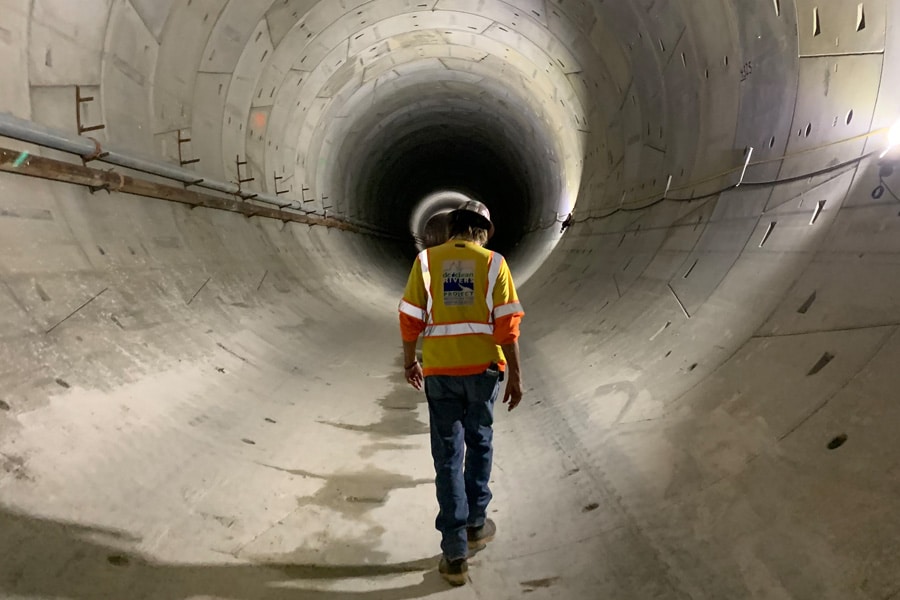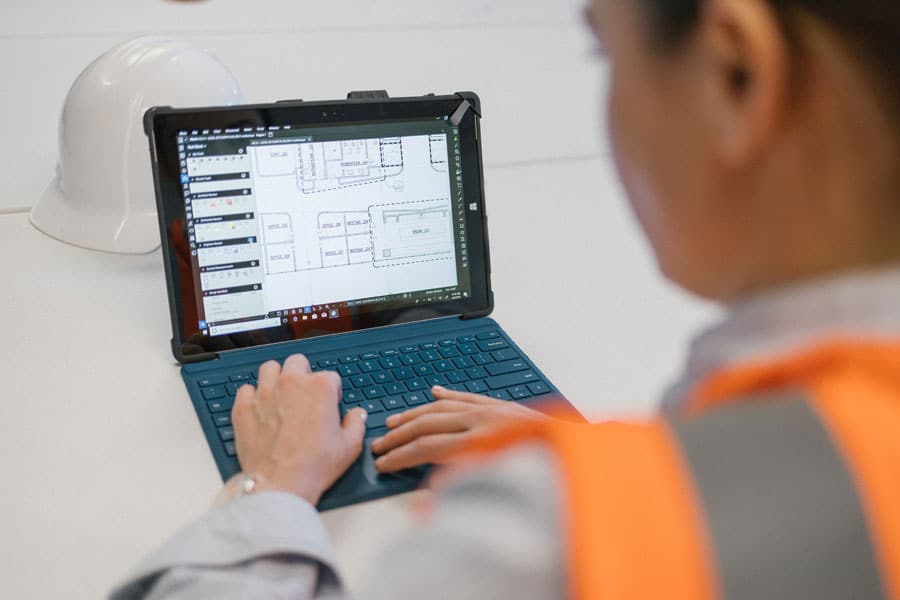Offering people the opportunity to work collaboratively during the design, build and handover stages of a construction project is Bluebeam’s main purpose. Seeing and annotating plans and documents online, instead of time- and cost-heavy physical copies, is proving to be a massive boost not only for private businesses but also the public sector.
Built UK spoke to Charlie Mendenhall, supervising building inspector for local plan reviews for the county of Merced, California, about why his team made the switch to Bluebeam seven years ago and what using the software has done to transform the way he and his colleagues are able to respond to the county’s needs.
With a total area of 5,130km2 (1,980mi2), Merced County is a few miles northwest of Fresno, California. An agricultural hub, Merced grows 90% of California’s sweet potato crop. Consequently, much of the county’s construction activity centers around agricultural planning applications for sizable farm and storage buildings. Permit applications were traditionally submitted, reviewed and signed off on paper, but in 2014, Merced’s Building & Safety Division adopted Bluebeam, making the construction submittal process fully digital.

Built UK: What was the initial problem you were looking to solve before you started using Bluebeam?
Mendenhall: We had two problems. The first was a lack of space to store our paper plans. The second, and more significant, related to the delays and inefficiencies resulting from routing plans through different departments. At the time, we needed reviews done by four different departments spread across three buildings, all several miles apart.
We had two ways to route plans, and they both had drawbacks. The first was to send a set to each department and have them do their reviews. That resulted in corrections and revisions being sent and received by multiple people and having three or four sets of approved plans that did not match. The procedure used for most of my time here was to keep reviewing until we had an approved set, then move that to the next department until all departments had finally approved it. It could take anywhere from weeks to months.
Built UK: How and why did the office choose Bluebeam for the new process?
Mendenhall: We decided in early 2014 to look for a way to move to digital plans. The permit record software we were using at the time was developing an add-on for e-reviews. But when a number of us attended a user conference to learn more, we discovered its implementation was almost a year behind schedule and projected to cost tens of thousands of dollars more than we had budgeted. At the same conference, we sat in on a short presentation from a Bluebeam representative, and we were so impressed that we sat with her afterwards and got more details. Those showed us that Bluebeam was not only exactly what we were looking for but was priced to allow us to purchase all the licenses we would need and still have plenty left over to purchase monitor upgrades and our own dedicated server.
Built UK: How long did it take you to come up with what you wanted to do, and how long did it take you to implement?
Mendenhall: Once we found the software, we moved as fast as possible. A lot of that was accomplished by us identifying the issues we knew would be expressed by the different departments involved in the plan reviews and our IT department. We then worked out how to preemptively solve those issues so that when they were brought up, we already had a response. This approach meant we went from being introduced to Bluebeam in October of 2014 to being fully set up and going live on Jan. 1, 2016.
Built UK: How did your team work together to decide the right workflow?
Mendenhall: The Building Division, where I work, developed a basic workflow that would get us started without any major problems, which we presented to the users from the other departments. I also created some instruction sheets to walk users through some of the frequently used tools, such as creating stamps, creating a user ID, merging documents and so on. All users were given a few months to play with the software and make suggestions about the basic workflow. By the time we went live, we had a good system in place that kept things simple while making sure the work could be done in a timely manner.
Built: Have you adapted that workflow for other teams/projects?
Mendenhall: Not currently. I have tried over the years to introduce the idea of using Bluebeam in different ways for other departments, such as Planning for their land use permits. While the idea received positive feedback, it never progressed past the conversation stage. That said, the changes we have gone through in the last year by merging these departments into one Community & Economic Development department may result in us moving forward with the idea.
Built: How did you roll out training for the team?
Mendenhall: I hosted a couple of training sessions with the review staff from every department and walked them through the basics, plus an overview of the software and a series of instruction handouts. We were only going to be using Sessions for our reviews, so I created several test Sessions with real plan submittal documents. The staff were sent invites to these so they could go in and work through them as they would when we were live. That hands-on approach let them get comfortable with the software and procedures we had developed while also allowing them to determine their preferred screen setup. Most people were happy with that because it gave them the freedom to work on it without interrupting their regular duties. Some of the employees also ended up making great suggestions to modify our planned workflow having used Bluebeam in that way.
Built: How did the idea of standardized markups or comments help to get buy-in?
Mendenhall: We decided to only use Callouts for corrections and continue to do that to this day. Users were able to create their toolbox with standard comments as Callouts and modify their appearance as they saw fit to differentiate them from other users. We stuck with Callouts because they are a great tool for identifying the area in question, using the arrow and providing a text box to write the correction note. It also allowed us to have a consistent appearance to our correction letters that the applicant receives and is easily created using the Summary feature.
Built: Has using Revu enhanced collaboration across stakeholders (internal or external)? If so, how?
Mendenhall: Revu has certainly enhanced internal collaboration. There has been greater communication between the different divisions and departments now that everyone can see corrections and comments made to a set of submittal documents. It also saves more time since there tends to be a lot of overlap in reviews; users who see something has already received a correction can move forward instead of duplicating the work.
Externally, the experience has not been quite the same. We have had positive responses from people and very few complaints about only accepting digital submittals, but the integration to coordinate with the customers through Bluebeam is still in its infancy. We worked to anticipate issues from other departments. One of those was our IT people, who were not comfortable with the transfer of documents through the county firewall. To avoid that issue, we purchased the Bluebeam Enterprise Server and hosted our own studio, but that didn’t allow us to have customers in our Sessions. During the pandemic, we transitioned to Bluebeam Studio when the Enterprise Server was discontinued, and over the years, the technology had progressed to the point where our IT people were more comfortable with this. We hope external collaboration will increase as time passes.
Built: What are the results you are seeing since using Revu? Have you been able to formally quantify them?
Mendenhall: Prior to going digital, we had a standard response time of four to eight weeks for the initial review upon submittal. With Bluebeam, that time is down to a maximum 30 days for all departments to have the initial review done and permit issued or corrections sent. Most of the time, we are running closer to two weeks.
Built: Can you estimate how much time or money your organization has saved?
Mendenhall: That is hard to say because it is more of a visual thing. One of the problems coming out of the Great Recession 10 years ago was that it lasted so long the people in our field retired, and replacements were hard to find due to lack of training and job opportunities. Bluebeam helped us adapt to having fewer people. We have managed to improve our service times with Bluebeam while consistently running with just 60% of the staff we had before the recession. Obviously, we made some other adjustments with how some things were done, but the Bluebeam integration was the largest and most significant by a huge margin.
Built: What about the number of additional documents you’ve processed before vs. after using Bluebeam?
Mendenhall: Construction has been picking up every year, and we are processing more all the time. We were a little surprised we didn’t take much of a hit during the pandemic. We were expecting it to come to almost a standstill, but it just seemed to keep moving forward at a steady pace.
Built: How much less paper (or estimated printing costs) has been used by going digital?
Mendenhall: The amount is quite high. We were being thanked by the customers immediately upon implementing just the early (pre-Bluebeam) voluntary submission of a digital set while only requiring half the number of printed sets. A lot of the building in our area is for agricultural purposes, and they typically use premanufactured steel buildings. Using the average cost around here to print out the initial submittal started at a minimum $500 for something simple. With staff time, resubmittal sets and wait time for printing, most projects were spending thousands in costs associated with physical sets. I think it’s safe to say hundreds of thousands of dollars have been saved each year since we started using Bluebeam. I imagine in a less rural area, one with a higher permit count, would easily be in the millions.
















